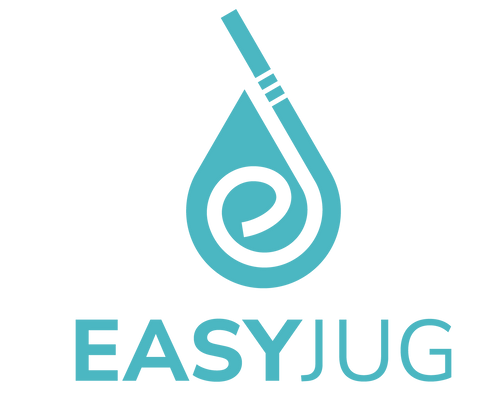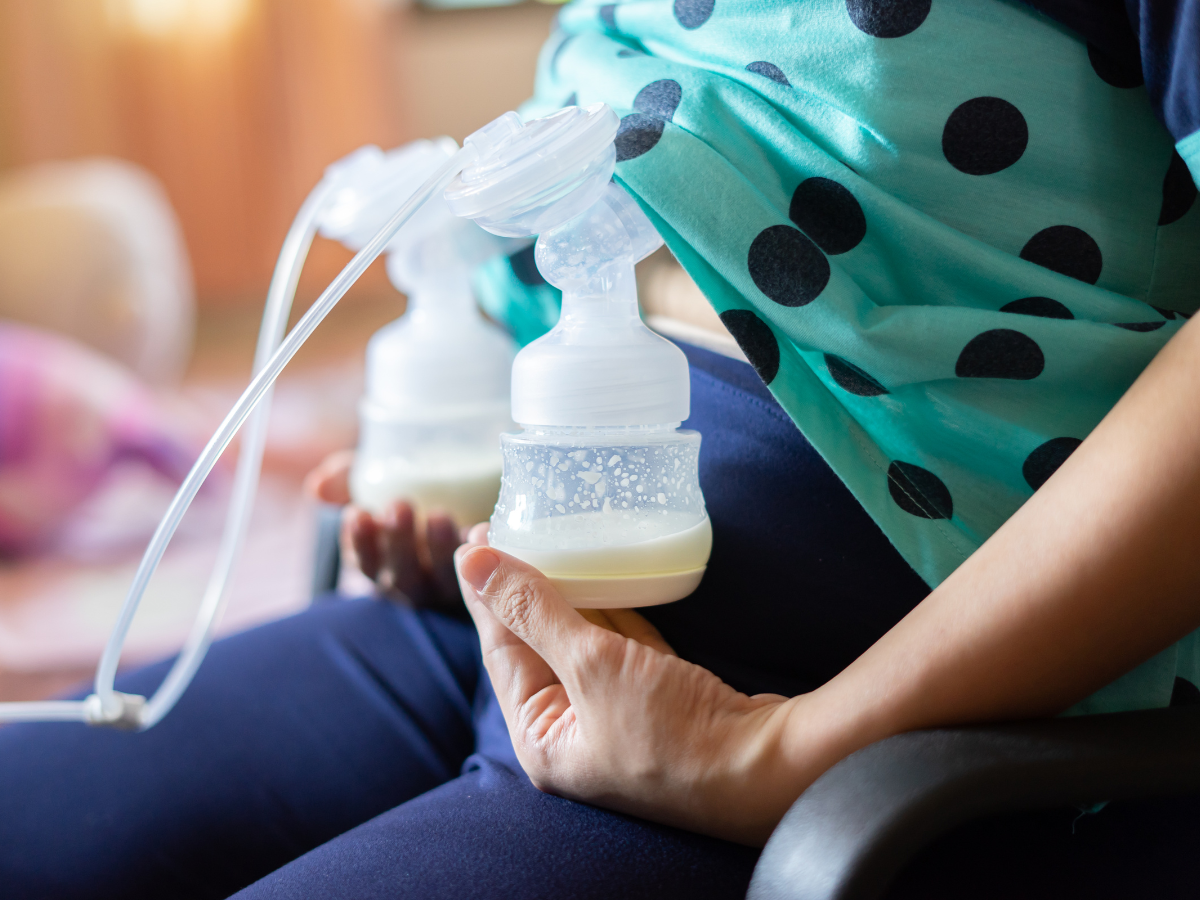As a new mom, finding the best time to breast pump can make all the difference in your breastfeeding journey. Breast milk production is influenced by various factors, including your baby's feeding schedule, your own routine, and your body's natural rhythms. Knowing when you produce the most milk can help you plan your pumping sessions effectively. This guide will help you understand key factors affecting milk production, such as hormone levels, the frequency of nursing or pumping, and the importance of hydration and nutrition. By identifying the best time to breast pump and creating a consistent schedule, you can ensure a steady milk supply and a more satisfying breastfeeding experience for both you and your baby.
Understanding Your Milk Production
Breast milk production is influenced by various factors, including your baby's feeding schedule, your own routine, and even your body's natural rhythms. Knowing when you produce the most milk can help you plan your pumping sessions effectively.
Key Factors Affecting Milk Production:
- Hormones: Prolactin and oxytocin play a crucial role in milk production and ejection. Understanding how these hormones work can help you optimize your pumping times.
- Frequency of Nursing or Pumping: Regular sessions, whether breastfeeding or using a breast pump, stimulate milk production.
- Hydration and Nutrition: Staying hydrated and maintaining a balanced diet is essential for a good milk supply. EasyJug products are designed to help you meet your hydration needs efficiently.
🔗 Breastfeeding can be exhausting—but did you know hydration plays a key role in milk supply? 🍼 Stay ahead of thirst and support your milk production effortlessly. Discover how EasyJug makes it simple.

When is the Best Time to Pump?
Finding the best time to breast pump depends on your individual schedule and your baby's needs. Here are some general guidelines to help you get started:
Early Morning
The early morning hours, typically between 1 AM and 6 AM, are often the best time to pump because your prolactin levels are higher, resulting in more milk production. If you can, try to pump right after your baby’s early morning feeding.
After Nursing
Pumping immediately after nursing can help you build a freezer stash and ensure that your baby is getting enough milk. This is especially useful during growth spurts when your baby might need more milk than usual.
Between Feedings
If your baby has longer gaps between feedings, this can be an ideal time to pump. Aim for about 30-60 minutes after a feeding session to maximize your milk output without interfering with your baby's next meal.
Creating a Pumping Schedule
Establishing a consistent pumping schedule can help maintain a steady milk supply. Here are some tips for creating a routine that works for you:
- Consistency is Key: Try to pump at the same times every day. This helps regulate your milk production and ensures you have a good supply.
- Include Your Partner: If possible, involve your partner in the process. They can help with bottle feeding while you pump or take care of your other responsibilities, giving you the time you need.
- Work with a Lactation Consultant: A professional can provide personalized advice and support, helping you optimize your pumping schedule based on your specific needs.

How Often Should You Pump?
Determining how often to pump can be a bit daunting, especially for new moms navigating the early days of breastfeeding. The frequency of your pumping sessions will depend on several factors, including your milk supply, your baby's needs, and whether you're pumping full-time or part-time. Here's a comprehensive guide to help you establish a pumping routine that works best for you and your new baby.
General Guidelines for Pumping Frequency
- In the First Month: During the first month, it's essential to establish a good milk supply. Aim to pump about every 2 to 3 hours during the day and once or twice at night. This frequency mimics a newborn's feeding schedule and helps stimulate milk production.
- After the First Month: As your baby grows and your milk supply becomes more established, you can adjust your pumping routine. Many moms find that pumping every 3 to 4 hours works well. If you're returning to work, try to pump during your baby's usual feeding times to maintain your supply.
Practical Tips for Successful Pumping
- Use the Right Equipment: Invest in a good breast pump that suits your needs, whether it's an electric breast pump, double electric pump, or manual breast pump. Hospital-grade pumps are excellent for frequent use and can help with low milk supply.
- Ensure Proper Storage: Store your breast milk in clean, sterilized bottles or bags. Always label them with the date and time of pumping.
- Stay Comfortable: Find a private, comfortable space to pump. Use a pumping bra for hands-free sessions and consider applying warm compresses to help with milk flow.
- Stress Hormones: Stress can impact milk production. Finding ways to relax, such as through skin contact with your baby or using soothing music during pumping sessions, can help mitigate this.
- Ensure a Good Seal: A proper fit with your breast shield can prevent discomfort and improve milk flow. Make sure you have the right size and type of pump parts.
- Stay Hydrated: Drinking water regularly is crucial. EasyJug’s specially designed bottles can help you stay on top of your hydration needs. Dehydration can make breastfeeding harder—but with the EasyJug, you’ll always have water within reach, even during cluster feeding marathons.
Addressing Common Concerns
- Low Milk Supply: If you're concerned about a low milk supply, consult with a healthcare provider or lactation consultant. They can offer professional medical advice and suggest ways to increase your milk production.
- Milk Ejection Reflex: Understanding and managing your let-down reflex can improve your pumping efficiency. Relaxation techniques, such as listening to music or deep breathing, can help.
- Proper Storage: Ensure that you're storing your milk correctly to maintain its quality. Use ice packs if you need to transport your milk and keep it at the right temperature.
- Formula Feeding: If you're supplementing with formula, you may not need to pump as often. However, regular pumping can help maintain your milk supply and ensure you have enough breast milk for your baby.
The Importance of Hydration in Milk Production
Hydration plays a pivotal role in milk production, and staying properly hydrated can significantly impact your breastfeeding success. For new parents, understanding the relationship between fluid intake and milk supply is essential. Here's why hydration is crucial and how you can ensure you're drinking enough to support your breastfeeding journey.
How Hydration Affects Milk Production
Breast milk is composed of about 90% water, making hydration vital for maintaining a healthy supply of milk. When you are well-hydrated, your body can more efficiently produce the amount of milk your baby needs.
🔗 Ready to simplify hydration during breastfeeding? Shop the EasyJug Ultimate Bundle now and enjoy hands-free hydration!
Key Points on Hydration and Milk Supply:
- Hydration Levels: Adequate fluid intake helps maintain the milk ducts and ensures that they function properly. This can lead to a smoother letdown reflex and more efficient pumping sessions.
- General Health: Staying hydrated supports overall health, which is crucial for new moms. Good health translates to better energy levels and a more consistent breastfeeding routine.
Practical Tips for Staying Hydrated
Here are some practical tips to help you stay hydrated and support your milk production:
- Drink Regularly: Make it a habit to drink water throughout the day. An EasyJug bottle can help you keep track of your fluid intake, ensuring you drink enough to maintain your breast milk supply.
- Hydration During Pumping: Drink a glass of water before each pumping session. Whether you are using a manual pump, a hospital-grade pump, or a double pump, staying hydrated can help maximize your milk output.
- Monitor Your Intake: Pay attention to your body's signals. Thirst is a good indicator that you need to drink more, but try to drink regularly before you feel thirsty.
Integrating Hydration into Your Routine
- During Nursing: Keep a water bottle within reach while you are breastfeeding or pumping. This makes it easy to sip water throughout your session.
- Post-Session Hydration: After each breastfeeding or pumping session, drink a glass of water to replenish the fluids lost during milk production.
- Healthy Fluids: In addition to water, consider hydrating with other healthy fluids like herbal teas, which can provide extra nourishment and support your overall health.
Hydration and Breast Pumping
Proper hydration is essential for effective breast pumping. Here’s how staying hydrated can improve your pumping experience:
- Increased Milk Production: Well-hydrated moms typically express more milk. This is especially important for those using a breast pump on a regular basis.
- Comfortable Pumping: Adequate hydration can help prevent clogged milk ducts and ensure a smoother pumping session.
- Efficient Pumping: Staying hydrated helps maintain the consistency of your breast milk, making it easier to pump and store.
Why EasyJug is the Best Water Bottle for Breastfeeding Moms
Choosing the right water bottle can make a significant difference in your breastfeeding journey. At EasyJug, we understand the unique needs of breastfeeding moms and have designed our products to meet those needs with unparalleled efficiency and convenience. The EasyJug Ultimate Bundle includes everything you need to make your breastfeeding experience more nourishing and comfortable. Here’s why EasyJug stands out as the best water bottle for breastfeeding moms:
Comprehensive and Convenient Bundle
The EasyJug Ultimate Bundle is thoughtfully curated to support breastfeeding moms with practical and convenient features:
- Hands-Free Hydration: The EasyJug Hands-Free Water Bottle with Long Straw allows you to hydrate effortlessly in any breastfeeding position, even while lying down. This 2.2L bottle ensures you have plenty of water without needing constant refills.
- External Clip: The included external clip keeps your water within reach at all times. Whether you’re at your nursing station or moving around the house, you can easily attach the bottle for quick access.
- Cleaning Brush: To maintain hygiene, the bundle includes a cleaning brush specifically designed to keep your straw clean and free of debris.
Designed for Comfort and Accessibility
EasyJug is meticulously designed to fit seamlessly into the life of a breastfeeding mom:
- 47-Inch Long Straw: The convenient long straw makes it possible to drink hands-free, which is especially beneficial when your hands are full holding your baby. This feature is perfect for late-night feeds and allows you to stay hydrated even in the side-lying position.
- Pack for Post-Delivery: Include EasyJug in your hospital bag to ensure you can drink easily post-delivery, when it may be uncomfortable to move or sit up. Having it within reach can make a huge difference in those first days.
- Nursing Station Essential: Keep EasyJug at your nursing station so you can stay hydrated without interrupting your breastfeeding routine. Its large capacity means fewer refills, letting you focus on your baby.
Practical and User-Friendly Features
- Leak-Proof Design: After you’re done drinking, simply clip the straw on top of the lid to prevent leakage. This ensures no spills and keeps your area tidy.
- Easy to Sip and Relax: The user-friendly design makes it easy to sip and relax, allowing you to focus on your baby while staying hydrated.
Promoting Healthy Habits and Recovery
Staying hydrated is crucial for maintaining a healthy milk supply and supporting your recovery post-delivery. The EasyJug Ultimate Bundle promotes these healthy habits effortlessly:
- Hydration for Milk Supply: Proper hydration helps maintain your breast milk supply, ensuring your baby gets the nourishment they need.
- Supporting Recovery: Drinking enough water supports your overall health and aids in your postpartum recovery. EasyJug makes it easy to track and maintain your fluid intake.
Explore More Helpful Guides
If you found this guide on the best time to breast pump helpful, be sure to check out our other informative articles that can support you throughout your breastfeeding journey. Here are some more resources that might interest you:
-
Guide: When to Pump if Breastfeeding Every 2 Hours: Learn how to effectively manage your pumping schedule when you're breastfeeding frequently. This guide provides tips on balancing nursing and pumping to maintain a healthy milk supply.
-
Effective Ways to Relieve Engorged Breasts When You're Not Breastfeeding: Discover practical methods to ease the discomfort of engorged breasts, even if you're not breastfeeding. From cold compresses to gentle massages, we cover a variety of solutions.
-
Is It Safe To Combine Breast Milk From Different Days?: Get answers to common questions about storing and combining breast milk. Learn the best practices for ensuring your baby receives safe and nutritious milk.
-
Creating a Breastmilk Stockpile: A Practical Guide for Busy Moms: Find out how to build a robust breastmilk stash that will keep your baby well-fed during busy times. This guide offers step-by-step advice on pumping, storing, and managing your milk supply efficiently.
By exploring these articles, you can gain more insights and tips to make your breastfeeding experience smoother and more enjoyable. Each guide is packed with valuable information to help you navigate the various aspects of motherhood with confidence.
Conclusion
In conclusion, finding the best time to breast pump can significantly enhance your breastfeeding journey. Understanding your milk production and creating an effective pumping schedule tailored to your individual needs is crucial. Our comprehensive guide helps you navigate key factors like hormone levels, frequency of nursing, and the importance of staying hydrated to ensure a steady milk supply. By pumping during optimal times, such as early mornings or between feedings, and maintaining a consistent routine, you can maximize your milk output and support your baby's nutritional needs. Additionally, addressing common concerns, using the right equipment, and seeking professional advice when needed can make your pumping experience smoother and more efficient.
🔗 Now that you know how essential hydration is for milk supply, let EasyJug make it easy. Our 2.2L bottle with a 47-inch straw helps you stay hydrated—hands-free—whether you're nursing, pumping, or recovering postpartum. 🌸 Order your EasyJug today!






